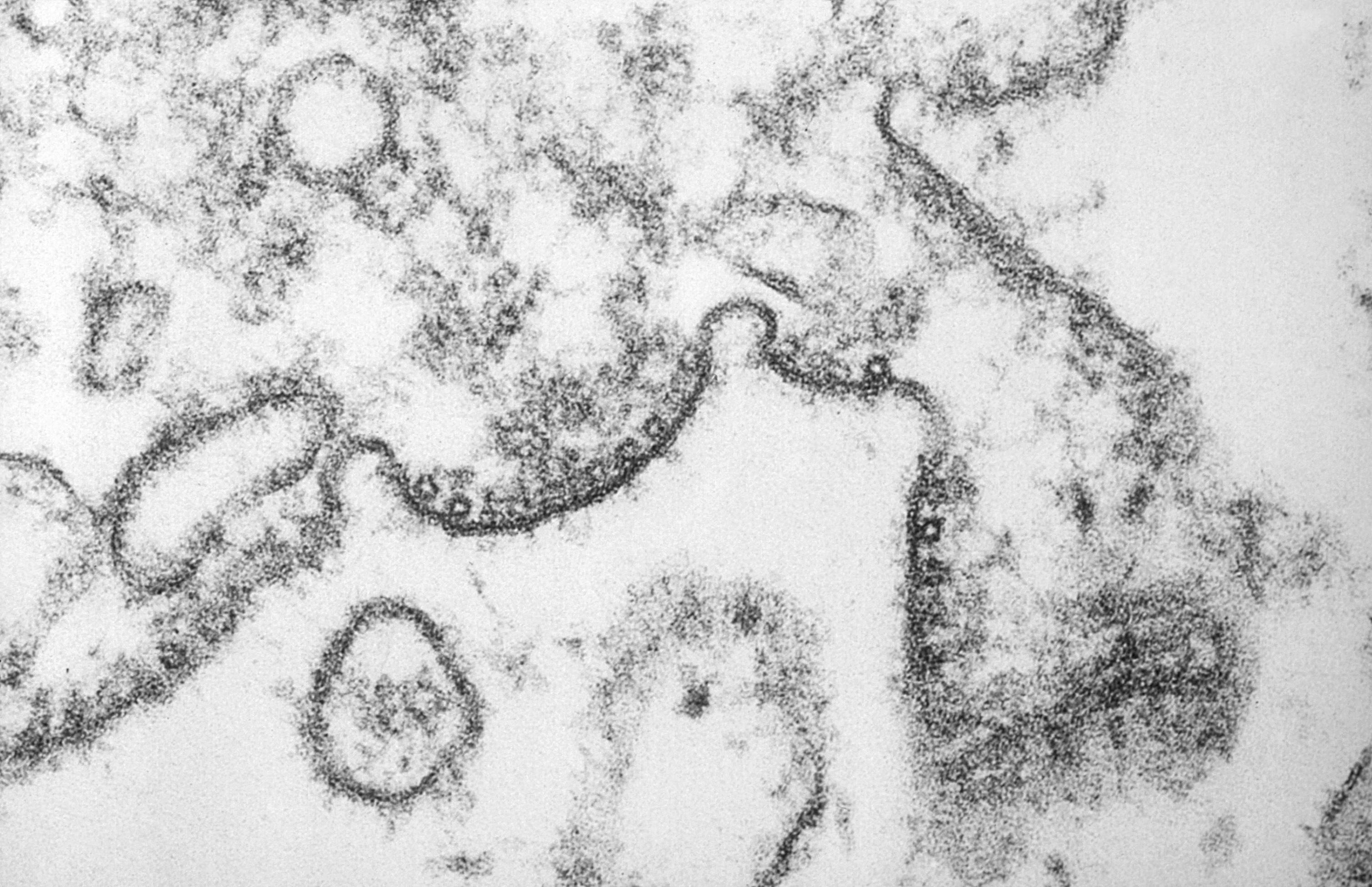Nipah Virus Discovered in India
One fatality of a 12-year old boy was reported in Kerala.
Transmission electron microscopic (TEM) image of a Nipah virus isolate revealed nucleocapsids aligned under the cell surface cut in transverse and longitudinal sections.

India’s National Institute of Virology in Pune confirmed that a 12-year old boy who died had the Nipah virus (NiV).
According to a report on CBS News, the boy was admitted to the hospital last week with a high fever and the treating physicians believed the patient had encephalitis. He died on Sunday.
A potential outbreak remains a concern as close contacts of the patient are being tested and monitored, and 2 health care workers who came into contact with him showed signs of NiV infection.
The Nipah Virus is a zoonotic virus and fruit bats are the natural animal reservoir for NiV. Outbreaks occur almost annually in Asia, affecting India and Bangladesh particularly, according to the Centers for Disease Control and Prevention (CDC). The federal agency also states NiV infection can be prevented by “avoiding exposure to sick pigs and bats in areas where the virus is present, and not drinking raw date palm sap which can be contaminated by an infected bat.”
Fruit bats, also known as flying foxes, can spread the infection to people as well as other animals such as pigs.
“The symptoms of NiV infection range from mild to severe, with death occurring in 40%–70% of those infected in documented outbreaks between 1998 and 2018,” the CDC reports on its website. There are no current therapies for NiV, and treatment is supportive care and treatment of symptoms.
Zoonotic viruses such as NiV could lead to a spillover event from animals to humans, which can then lead to larger outbreaks in humans. A newer initiative, STOP Spillover, which was funded by the United States Agency for International Development, is trying to reduce future outbreaks from known zoonotic viruses by having partners on the ground in various parts of the world to monitor, analyze, and characterize the risk of priority zoonotic viruses and potential spillover events.
STOP Spillover is in 5 countries including Uganda, Liberia, Cambodia, Bangladesh, and Vietnam with the long-term goal to be in 10 countries across Asia and Africa.
